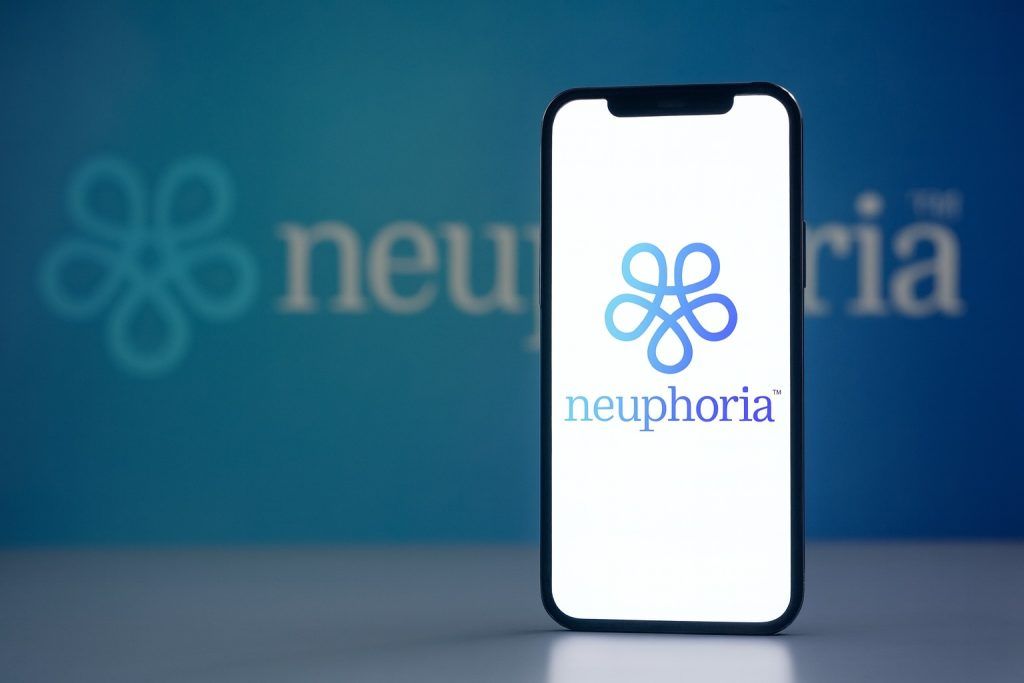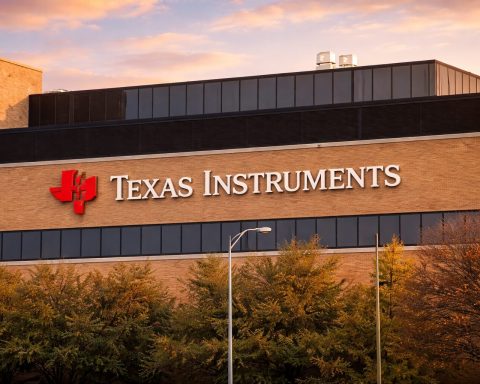- Sharp Selloff on Oct 24: Picard Medical (NYSE American: PMI) stock fell sharply on Oct 24, 2025. Trading around $3.27 in mid-day, PMI was down about 75% from its previous close [1]. (For comparison, it had closed at $13.20 on Oct 23 [2].)
- Pre-Selloff Rally: Just a day before the crash, PMI had surged to its 52-week high. On Oct 23 the stock traded as high as $13.68 [3]. The mid-October rally left shares up roughly 60–80% over the month, before the sudden plunge.
- Dilution Warning: Media and analysts widely attribute the drop to an SEC filing on Oct 14 revealing a huge expansion of Picard’s stock compensation plan. This amendment authorizes up to 18 million new shares (including new warrants), sparking fears of massive future dilution [4]. Benzinga notes the move was “widely attributed” to the expanded equity incentive plan disclosed in that filing [5].
- Strong Q2 Growth & IPO: In Q2 2025 Picard reported 207% revenue growth (to $2.13M, driven by SynCardia heart sales) [6]. CEO Patrick Schnegelsberg praised the results as “strong sales growth” and said the $19.5M IPO (closed Sept 2025) will fund its next-gen fully implantable “Emperor” artificial heart [7] [8]. The IPO (4.25M shares at $4.00) closed Aug 2025 and is intended to fund expansion (including a China JV) and R&D [9] [10].
- Emperor Patent: In late Sept 2025 Picard announced a new U.S. patent for its “Emperor” implantable heart, bringing its U.S. patent count to 34 claims on the next-gen system [11] [12]. Management says the growing IP portfolio “secures the path from development to commercialization” of its fully implantable artificial heart [13] [14].
- Industry/Peers Context: Picard (via SynCardia) makes the only FDA-approved total artificial heart in the U.S. (and Health Canada) [15]. Over 2,100 SynCardia hearts have been implanted worldwide [16]. Key competitors like France’s Carmat and the UK’s Realheart device are still in trials [17] [18]. Market research names SynCardia (Picard) alongside CryoLife, Abiomed (now Abbott), Carmat, etc., as leaders in the artificial-heart market [19].
- Analyst Outlook: Investors remain cautious. For example, Investing.com’s consensus shows PMI’s one-year price target with –11.9% upside (i.e. slightly below current levels), versus +38% upside for average peers [20]. This reflects uncertainty about the company’s growth and looming dilution risks.
Stock Price & Recent Movement
Picard Medical stock has been extremely volatile this month. After its Aug. 29 IPO at $4.00, PMI traded mostly under $10, but shot higher in mid-October. On Oct. 20 the stock closed around $11.60, then hit a new 52-week peak near $13.68 by Oct. 23 [21]. However, on Oct. 24 trading opened sharply lower. By mid-day Oct. 24 the shares were about $3.30, erasing nearly all the prior week’s gains [22]. Investing.com confirms that as of Oct. 24, 2025 PMI was trading at $3.27 with a previous close of $13.20 [23]. This represents a collapse of roughly 75% in just one day. Volume spiked as panic selling set in.
Most reports point to one immediate trigger: an SEC 8-K filing on Oct. 14. That filing disclosed that Picard’s shareholders had approved a massive expansion of its 2021 Equity Incentive Plan [24]. In effect, the company can now issue up to 18 million shares (and attach large stock warrants) to employees and others. Such a jump in authorized shares raised alarms about future dilution of existing stock, and traders dumped the shares in response. Benzinga observed the stock “plunged approximately 65% in premarket trading” after the filing, erasing a recent bull run [25] [26]. (Benzinga also noted the stock was trading ~$4.53 in premarket on Oct. 24 [27], consistent with the overall ~75% drop by mid-day.)
On Oct. 23, just before the drop, PMI had traded above $12–13 all day (opening $13.05, hitting $13.68 high, closing $13.20 [28]). Some technical analysts had pointed to an overbought situation (PMI was ~131% above its 50-day average [29]). But the sudden “equity plan” news was the main catalyst cited by traders. There is no FDA setback or product failure; the SynCardia heart device is still approved and selling. Rather, this is a corporate governance shock.
Key Business Developments
IPO and Capital Raise: Picard Medical’s IPO successfully priced 4.25M shares at $4.00 in late August 2025 [30], raising $17M gross. The company announced those funds would support international expansion and R&D, specifically funding a China joint venture (SynCardia Medical in Beijing), research on the Emperor implantable heart and new driver systems, and broader sales/distribution [31]. After the IPO, Picard said it had enough runway to fund operations into 2026 under its current plan [32]. The cash infusion and diluted ownership (current float ~74M shares, post-IPO) set the stage for rapid growth expectations, but also the dilution fears now realized.
Financial Results: On Sep. 15, 2025 Picard reported Q2 (June 30) results [33]. Revenue was $2.13M, up 207% from $0.69M a year earlier – driven entirely by higher U.S. sales of the SynCardia total artificial heart. (With over 2,100 implants to date in 27 countries, demand had accelerated.) Gross loss and operating loss narrowed year-over-year, but net loss grew to $6.72M (versus $4.06M in 2Q24) largely due to non-cash interest on debt and derivatives [34]. Management stressed the upside: CEO Patrick Schnegelsberg said the results reflected “strong sales growth for the SynCardia total artificial heart” and praised the IPO proceeds. “We achieved over 200% revenue growth year-over-year,” he said, adding that the IPO “provides us with the capital to advance development of our next-generation fully implantable heart and expand access to the SynCardia platform globally” [35].
Intellectual Property: Picard has been building the IP around its new “Emperor” artificial heart, which is designed to be fully implantable (no external pneumatic driver needed). On Sept. 22, 2025 the company announced that the U.S. Patent Office granted Patent No. 12,383,722 B2 for Emperor technology [36]. This patent (covering systems and methods for a pulsatile implantable heart) increased Picard’s U.S. patent claims on the Emperor to 34 [37]. COO Matt Schuster said the expanded patent portfolio “secures the path from development to commercialization” of the Emperor system [38]. CEO Schnegelsberg similarly touted these milestones: “Our patent portfolio secures the path from development to commercialization” of a fully implantable heart [39]. (Picard also holds a corresponding China patent for the Emperor.) These IP wins have been positive drivers for the stock in recent weeks.
Partnerships: Picard’s SynCardia already established a marketing/joint-venture arrangement in China (SynCardia Medical (Beijing)) in 2023 [40]. Other partnerships focus on sales and support in key transplant hospitals, but no major new deals were announced in October beyond the equity plan issue. The company continues to supply the SynCardia TAH and portable drivers to U.S. and Canadian hospitals (the core markets), while pursuing regulatory clearances in other regions over time.
Analyst Quotes and Forecasts
There are limited sell-side analyst publications on this small-cap biotech, but general sentiment appears cautious. Most investor commentary has focused on the recent volatility and fundamentals. For example, Investing.com reports that consensus analyst targets imply no upside: PMI’s 12-month target price is about 11.9% below the current level [41]. (In contrast, the average for similar healthcare peers shows a +38% upside.) This suggests analysts view the stock as fairly valued or even rich given the dilution risk [42]. Some technical indicators have flipped bullish on the steep selloff (Investing.com notes PMI turned a “Strong Buy” signal on moving averages as of Oct. 24, reflecting oversold conditions [43]), but fundamental analysts highlight the debt and loss profile and the need for many more heart sales or product launches to reach profitability.
Financial websites also track valuation metrics. PMI’s forward multiples remain very high relative to sales (reflecting its small revenue base). An Investing.com sector analysis shows PMI’s price/sales at ~192× (far above peers) and a negative P/E [44]. In short, analysts and data providers note that the stock’s recent gains are speculative, and the dilution announcement has reset their outlook. No new public price targets emerged after the Oct. 24 drop, but some sources suggest targets in the mid-single digits were realistic even before the crash.
Industry Context and Peers
Picard Medical is best understood as the corporate parent of SynCardia Systems, the pioneer of the only commercially-available total artificial heart. SynCardia’s SynCardia TAH (pulsatile pump system) is the first FDA- and Health Canada-approved implantable total artificial heart [45]. It is used as a “bridge-to-transplant” for patients with end-stage biventricular heart failure. To date over 2,100 patients in 27 countries have received the SynCardia system [46]. Because of this, Picard occupies a unique niche: its product has no direct on-market rival in the U.S.
However, several competitors are emerging in related fields. France’s Carmat has developed a fully implantable artificial heart (though it still requires hospitalization) and has done limited implants in Europe [47]. The UK’s Realheart is another startup working on an FDA trial of an implantable heart. US startup BiVACOR won an FDA breakthrough designation in 2025 for its titanium heart device [48]. (MedTech Dive notes “Syncardia already sells an artificial heart, and Realheart and Carmat are developing” similar devices [49].) Major cardiac device firms like Abiomed/Abbott and LivaNova dominate the heart pump/VAD space, but they focus on ventricular assist devices (VADs, e.g. Impella or HeartMate pumps), not complete hearts. Industry reports list SynCardia (Picard) alongside CryoLife, Abiomed, Carmat, Abbott, etc., as the leading players in the global artificial heart market [50].
Market research projects the overall artificial heart and cardiac assist market to grow strongly (e.g. from roughly $2.5–3.0 billion in 2024 to $7–8B by the early 2030s [51] [52]) as populations age. North America is the largest region today [53], and new technologies (miniaturization, AI monitoring) are under development. In this context, Picard’s SynCardia business has growth potential—but also challenges. The SynCardia heart remains expensive (often >$100,000 just for the device [54]) and its use is confined to well-equipped transplant centers. Success for the next-gen Emperor or any new driver will depend on clinical trial results and funding.
Outlook
With PMI now trading near its lows, investors will watch closely for further news. Management has stressed that the dilution plan was approved in October but will only be used over time as needed; the company’s ability to generate sales from its currently approved product is still the main driver of near-term value. CEO Schnegelsberg has reiterated the company’s strategy of leveraging the IPO funds to scale sales and develop the Emperor system [55]. Meanwhile, analysts expect Picard to report Q3 results in November (covering Sept 30 quarter-end) and may revisit their models accordingly.
In summary, Picard Medical’s stock story in Oct. 2025 is one of wild swings. A rally on strong sales and exciting patents was overturned by corporate news. Risks remain: ongoing losses, potential share overhang from large option pools, and competition. Opportunities include expansion into new markets (China and beyond) and eventual adoption of the fully-implantable heart. As one investment writer noted, this episode underscores how even a medical technology with a groundbreaking product can see heavy volatility if its financing and ownership structure change suddenly. Investors should weigh both the long-term promise of Picard’s artificial heart platform and the very short-term dilution concerns that hit the stock so hard this week.
Sources: Official press releases and filings from Picard Medical [56] [57]; Q2 2025 results [58] [59]; news reports (Benzinga, MedTechDive, Investing.com) covering the stock’s move and industry context [60] [61] [62] [63].
References
1. www.investing.com, 2. www.investing.com, 3. stockanalysis.com, 4. www.benzinga.com, 5. www.benzinga.com, 6. www.biospace.com, 7. www.biospace.com, 8. www.nasdaq.com, 9. www.globenewswire.com, 10. www.globenewswire.com, 11. www.benzinga.com, 12. www.nasdaq.com, 13. www.nasdaq.com, 14. www.benzinga.com, 15. www.globenewswire.com, 16. www.nasdaq.com, 17. www.medtechdive.com, 18. www.medtechdive.com, 19. www.mordorintelligence.com, 20. www.investing.com, 21. stockanalysis.com, 22. www.investing.com, 23. www.investing.com, 24. www.benzinga.com, 25. www.benzinga.com, 26. www.benzinga.com, 27. www.benzinga.com, 28. stockanalysis.com, 29. www.benzinga.com, 30. www.globenewswire.com, 31. www.globenewswire.com, 32. www.biospace.com, 33. www.biospace.com, 34. www.biospace.com, 35. www.nasdaq.com, 36. www.nasdaq.com, 37. www.nasdaq.com, 38. www.nasdaq.com, 39. www.nasdaq.com, 40. www.globenewswire.com, 41. www.investing.com, 42. www.investing.com, 43. www.investing.com, 44. www.investing.com, 45. www.globenewswire.com, 46. www.nasdaq.com, 47. www.medtechdive.com, 48. www.medtechdive.com, 49. www.medtechdive.com, 50. www.mordorintelligence.com, 51. straitsresearch.com, 52. www.mordorintelligence.com, 53. www.mordorintelligence.com, 54. straitsresearch.com, 55. www.nasdaq.com, 56. www.globenewswire.com, 57. www.nasdaq.com, 58. www.biospace.com, 59. www.nasdaq.com, 60. www.benzinga.com, 61. www.benzinga.com, 62. www.medtechdive.com, 63. www.investing.com








